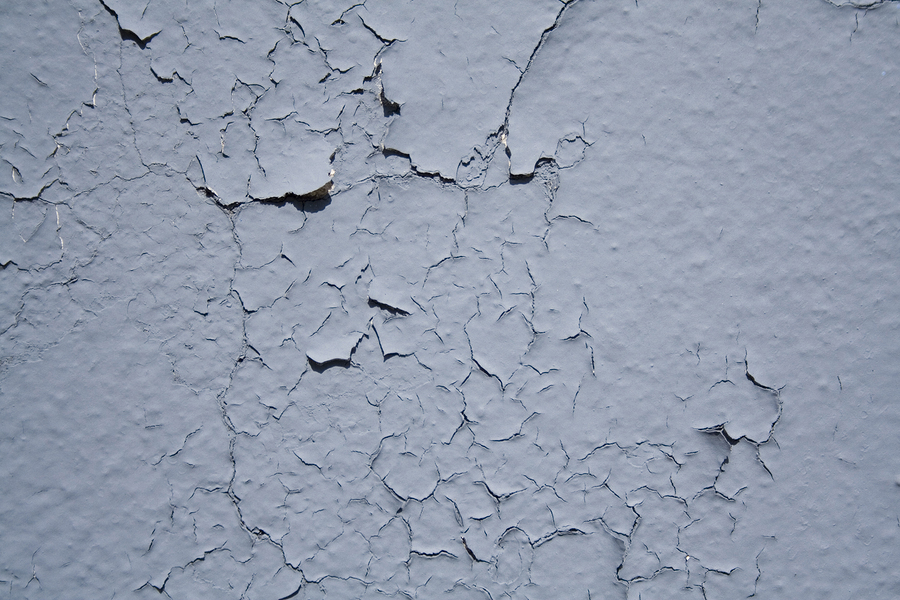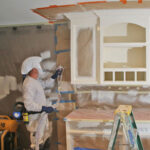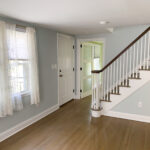Painting Problems and How to Fix Them
 A variety of things can affect the quality of a home paint job. It would be great if all you had to do to achieve a perfect, lasting paint finish was to apply the paint. Unfortunately, a lot of factors come into play that can mar the results of your painting tasks.
A variety of things can affect the quality of a home paint job. It would be great if all you had to do to achieve a perfect, lasting paint finish was to apply the paint. Unfortunately, a lot of factors come into play that can mar the results of your painting tasks.
The primary reasons paint jobs don’t turn out the way the painter intended usually fall into the following categories:
- Quality of the paint
- Condition of the surface(s) to be painted
- Temperature/humidity of the surface and surrounding air
- Cleanliness of painting tools (brush, roller, etc.)
- Quality of the painting tools
- Condition of the painting area during drying
- Skill of the painter
Any one or a combination of these can cause the finished product of a paint job to be less than satisfactory. Here are a few common problems and how to prevent them.
Blistering
This happens when paint detaches from the surface.
Prevent: Paint only on clean, dry surfaces. Cover stains with a good primer. Don’t paint in weather that’s particularly hot and humid. Don’t let moisture come in contact with the surface until paint is thoroughly dry.
Blocking
Blocking occurs when two painted surfaces come in contact and stick or transfer paint from one to the other.
Prevent: Use a top-quality acrylic latex paint. Give surfaces sufficient time to dry. Make sure windows and doors open freely and correctly prior to painting.
Burnishing
Repeated rubbing of a painted surface can produce a sheen known as burnishing.
Prevent: Areas that will need regular cleaning should be painted with a high-grade semi-gloss or gloss latex paint, which is easier to clean than flat paints. Don’t wash surface for two weeks after painting. Keep objects from constantly brushing against painted surface.
Cracking/flaking
 Cracks begin small but can worsen to the point that paint chips are falling off the surface.
Cracks begin small but can worsen to the point that paint chips are falling off the surface.
Prevent: Use a high-quality paint, and don’t apply oil-based paint over latex paint. Coats should be sufficiently thick. Thoroughly clean and prepare the surface before painting. Let paint dry before applying more coats.
Bubbling/foaming
Some bubbling is normal during painting, but bubbles that remain on the surface indicate a problem.
Prevent: Don’t use paint shaken in a half-full can. Don’t over-roll or over-brush. Porous surfaces should be primed and sanded (if the surface is rough) before painting. Use a short-nap roller for gloss and semi-gloss paints.
Mold
Mold is a rugged substance and must be dealt with before painting.
Prevent: Never paint over mold. Use a bleach-based product to clean mold from surfaces. Use a high-quality primer followed by a mildew-resistant paint. Try to reduce the humidity in the room. Keep air circulating in the painting area.
As you can see, there are many ways that an otherwise great paint job can be marred. At Franklin Painting of Connecticut, our paint crews know all the “tricks of the trade” required to provide you with a paint job that not only looks wonderful but also stands the test of time. For your next paint project, call on the professionals at (877) 646-7774.
Franklin Painting LLC – Call us Toll Free at 877-646-7774
or at our main office number 860-678-7701
160 Brickyard Road, Farmington, CT 06032








